5 Fall Prevention & Home Safety Tips for Older Adults
Posted on by Eric Rubel
As we age, our home may not be as easy to navigate as it was years ago. Getting up and down a set of stairs may be a chore because of decline in mobility or weaker muscles. The risk of slipping and falling in the bathroom may be much higher, especially if there are no grab bars in the bathtub/shower, or near the toilet.
An option for older adults that are having a difficult time getting around at home is a senior/assisted living facility. However, these types of facilities do not offer the familiarity and comfort that a home does. A home is full of memories from holidays and gatherings with family and lifelong friends.

According to the AARP, 77% of seniors age 65+ prefer to age in place in the long term. So, even though senior living facilities are an option for seniors with limited mobility, it is not the most preferred option in the United States. Most seniors want to age in place because they enjoy their current home, and are familiar with the local community as well as their nearby neighbors. Aging in place is also much more affordable than moving into a senior living facility or a new home.
Lifeway Mobility is a company that provides accessibility and mobility solutions for seniors, such as stair lifts, wheelchair lifts, and wheelchair ramps.
In this post, we outline home safety tips that will can seniors reduce the risk of a fall and improve their independence, safety, and quality of life at home.
1. Accessibility
A home that is fully accessible can significantly increase safety and reduce the risk of falling for seniors with limited mobility. For those who struggle with balance, the stairs, both indoors and outdoors can be dangerous. Below are a few easy ways to improve safety when using the stairs:
- Keep the stairways clear of any objects, such as boxes or pet toys, and free of ice and snow (outdoor staircases)
- Ensure a sturdy railing is in place to provide extra support/stability
- Remove any clutter at the top and bottom landings
Accessibility Modifications
For some, simply cleaning up or clearing up a staircase can help improve safety, but others may require a simple accessibility modification. Consider the installation of an "up and down the stairs accessible solution", such as a stair lift, wheelchair lift, or wheelchair ramp.
A stair lift typically works best for a senior who can still walk but has difficulty navigating the stairs, while a wheelchair lift or ramp may better options for those who use a wheelchair or powerchair to get around. An accessibility expert from Lifeway can help decide which solution will work the best for your needs and situation.
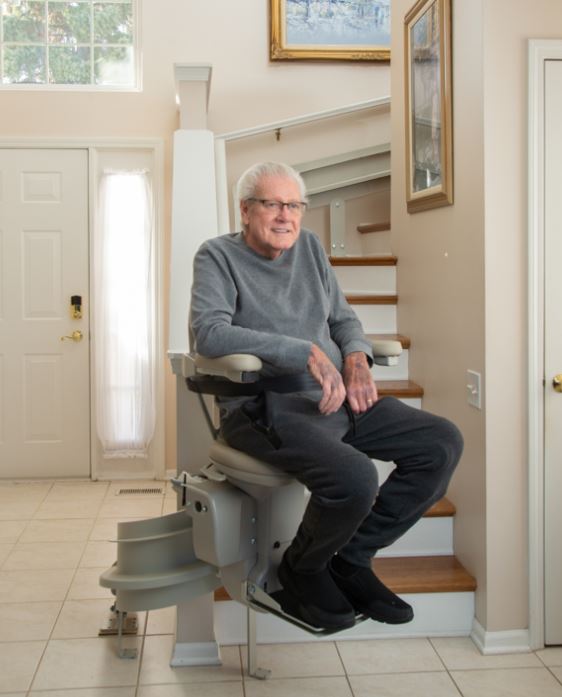
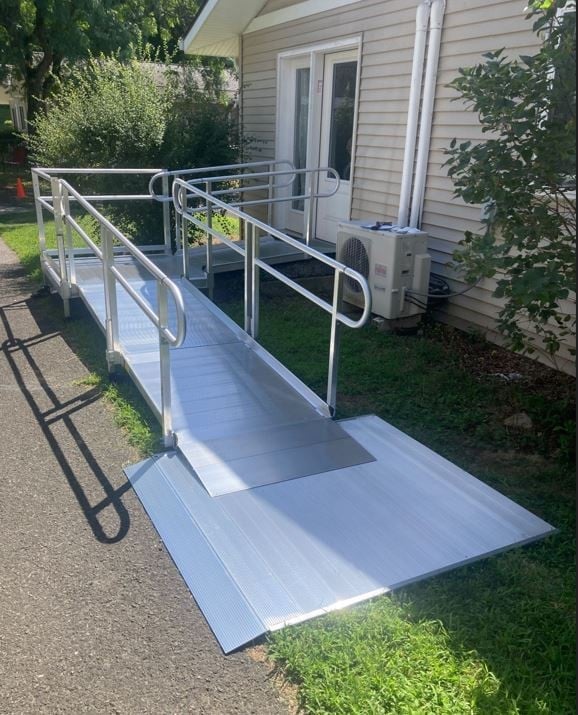
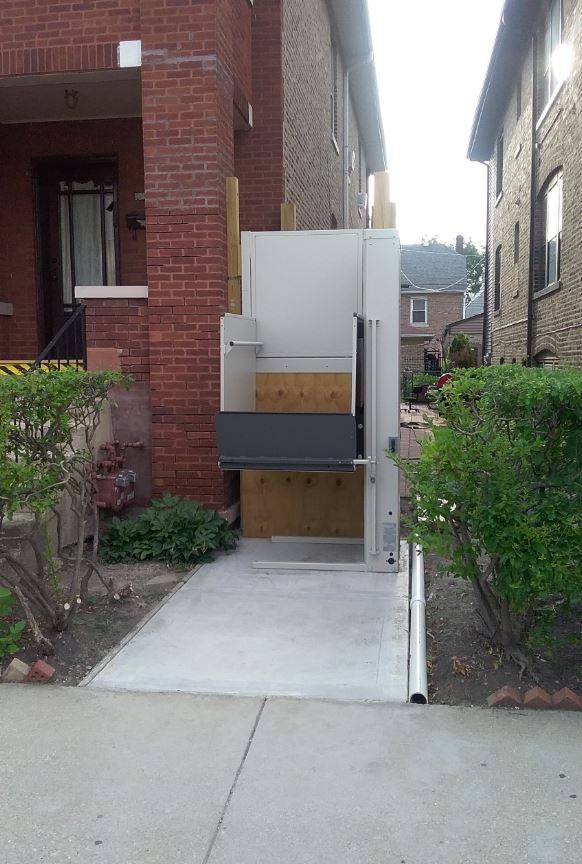
Any of these accessibility solutions can help a senior remain independent and regain easy access to all levels of the house.
It is also important to check the driveway and sidewalks near your home for cracks. If there are any cracks in the cement near your home, ask a son, daughter, friend, or neighbor to fill the crack. Also, some villages or towns have a maintenance person who can come fill a crack in the cement outside your home. These types of cracks are a tripping hazard and can lead to a fall, which can result in a serious injury.
Compare wheelchair ramp vs. wheelchair lift
2. Lighting
Having adequate lighting in all rooms throughout the home is very important. It helps older adults avoid obstacles, maintain balance and reduces the risk of falling at home. As we age, eyesight can decline, and it's easy to overlook this when we choose lighting.
Extra home lighting tips:
- Ensure that all lights are working properly.
- Add lighting to floors, by the bed, where the telephone is kept, under cabinets, and in specific areas where time is spent.
- Add a night light in the bedroom and bathroom.
- Double check the light switches and light bulbs to ensure they are all working. Touch or motion sensor lights can be very helpful for seniors.
- Keep up with eye health. Check to make sure glasses have the right lens strength and stay-up to date on eye appointments.
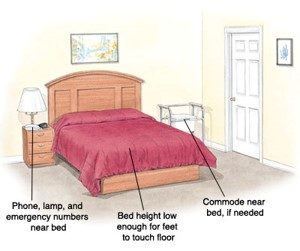 3. Furniture
3. Furniture
- The furniture in a home, whether it be a couch, chair, or table, should be safe and reliable
- Small tables or stools should remain out of walkways to prevent a trip or fall
- The bed should be at a height that allows for safe and easy transfers
A bedside commode is also a great addition if a senior's limited mobility makes it difficult to quickly navigate to the nearest bathroom. The path to the commode should be free of clutter and easy to access.
4. Toileting/Bath
The bathroom often presents many tripping hazards for those who have limited mobility. In fact, the bathroom is where most at-home senior falls and injuries happen.
Need support while showering or getting on/off the toilet?
Grab bars are a great addition to the shower/bathtub and near a toilet. They provide added support and stability when taking a shower or bath and getting on/off the toilet. In addition, all products needed while showering or using the toilet should be easy to access from a seated position.
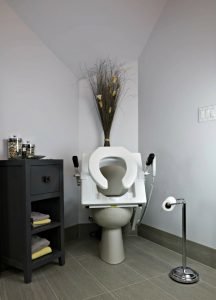 Is the toilet too high or too low?
Is the toilet too high or too low?
Getting on and off a toilet that may be too high or too low increases the risk of falling. A product such as an elevated toilet seat will increase safety and reduce the risk of falling. Choose between a 1"-3" seat height to make it easier to stand up from the toilet. The EZ-Access toilet incline lift (TILT) is another product that is easy to use and built for durability.
Is it difficult to step in/out of the bathtub or shower?
The quickest and most economical solution to improve safety when getting in and out of the tub or shower is the installation of bathroom safety products. Grab bars come in many different different sizes and can be installed horizontally, vertically, and diagonally to provide extra support getting in/out of a tub or shower and while bathing. Other products, such as shower chairs or bath transfer benches are helpful for those that cannot stand while bathing.
If bathroom safety products like the ones mentioned above do not provide enough support, or if swinging your leg over a raised entry barrier is the main issue, then a roll-in shower or walk-in tub are solutions to consider. Lifeway Mobility offers free consultations to help people decide which is the best option based on an individual's specific needs.
A slip-resistant mat, like the one pictured below, is another way to prevent slipping in the bathroom.
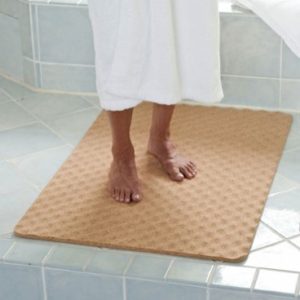
5. Other Home Safety Tips
- Use a medical alert system. Medical alert systems such as Life Alert can be very helpful in the case of an emergency – it's always best to be prepared
- De-clutter! Check the floor for pet toys, loose throw rugs, or other small items to prevent any possible tripping hazards
- Make sure a telephone is within reach when in bed or sitting on the couch
- Use a chair or stool for kitchen tasks, such as meal prep and dish washing
- Wear safe, slip-resistant footwear to reduce the risk of falling
- Do a routine check on your smoke/CO detectors to ensure they are working properly
- Make sure there is enough room beside the bed for a walker or wheelchair, if needed
- Know their medications. Check if any side effects could cause balance issues or anything else that makes them susceptible to falling, and make sure they are taking the medication as prescribed
Home Safety Tips Infographic
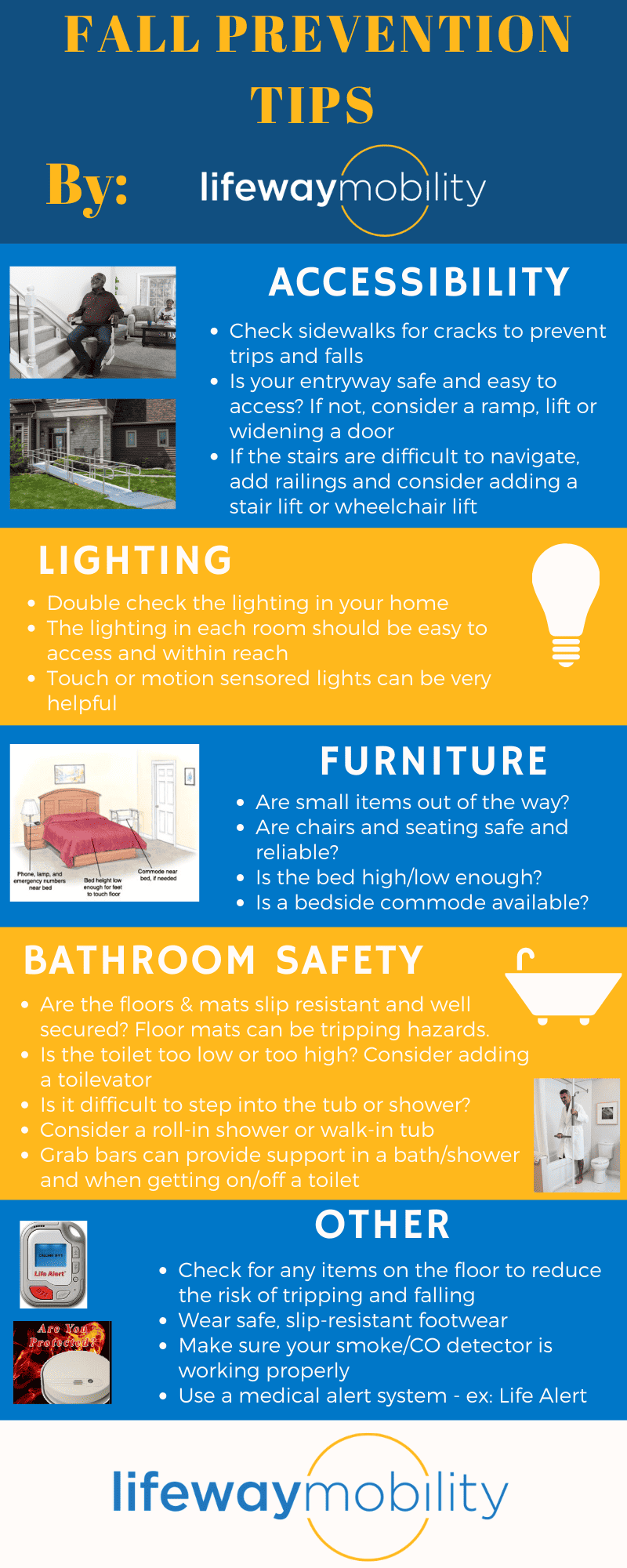
If you have any questions about the solutions we offer, please call us contact us.
Additional Resources:
